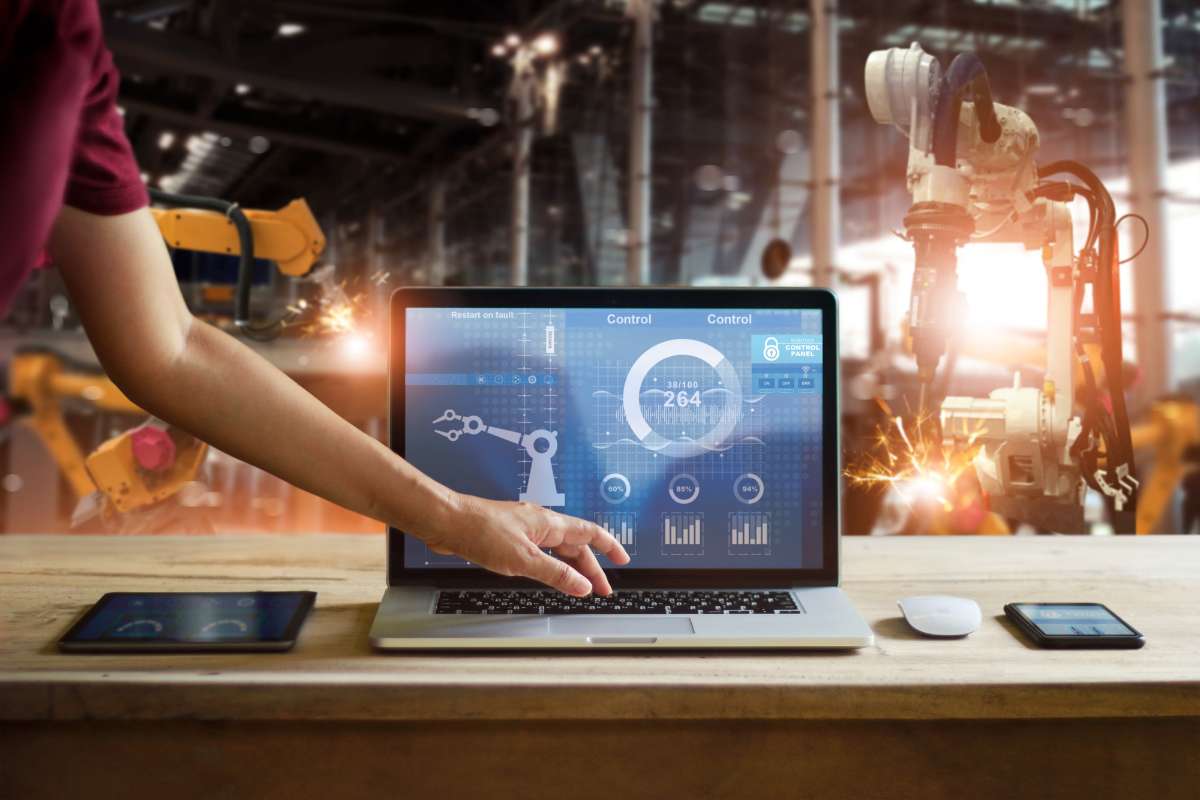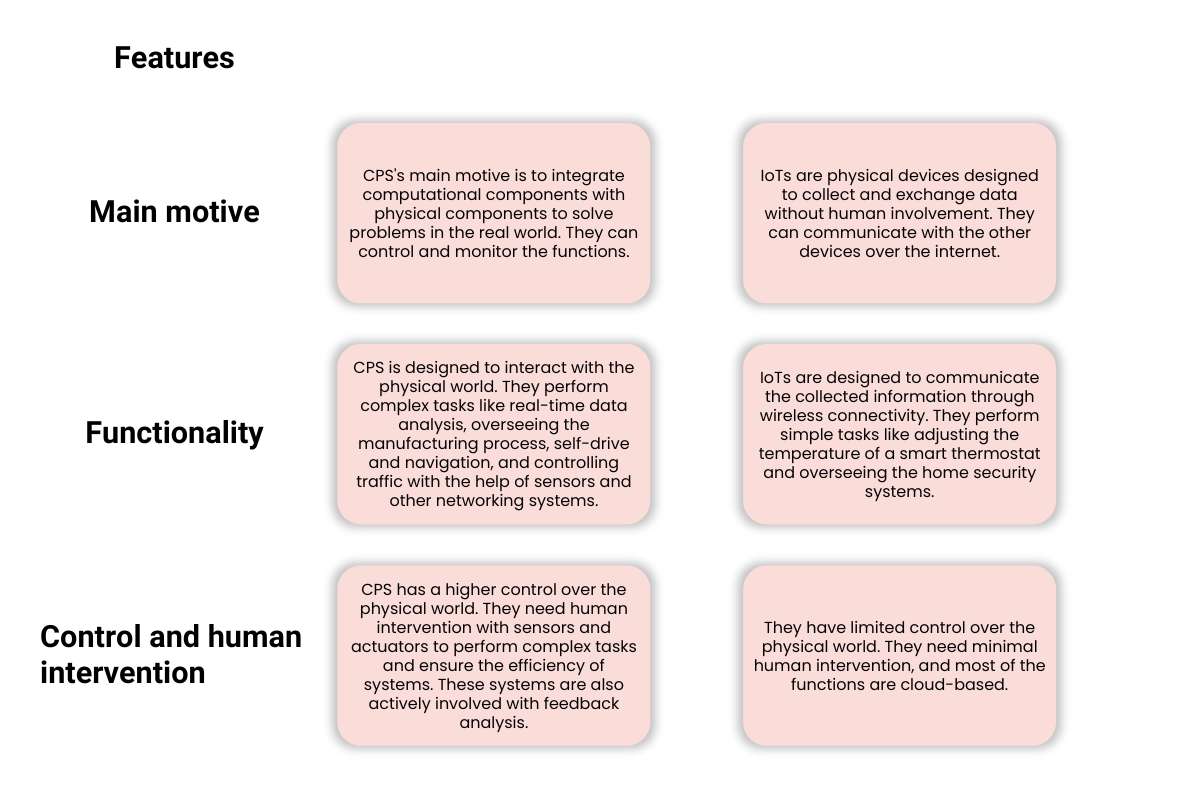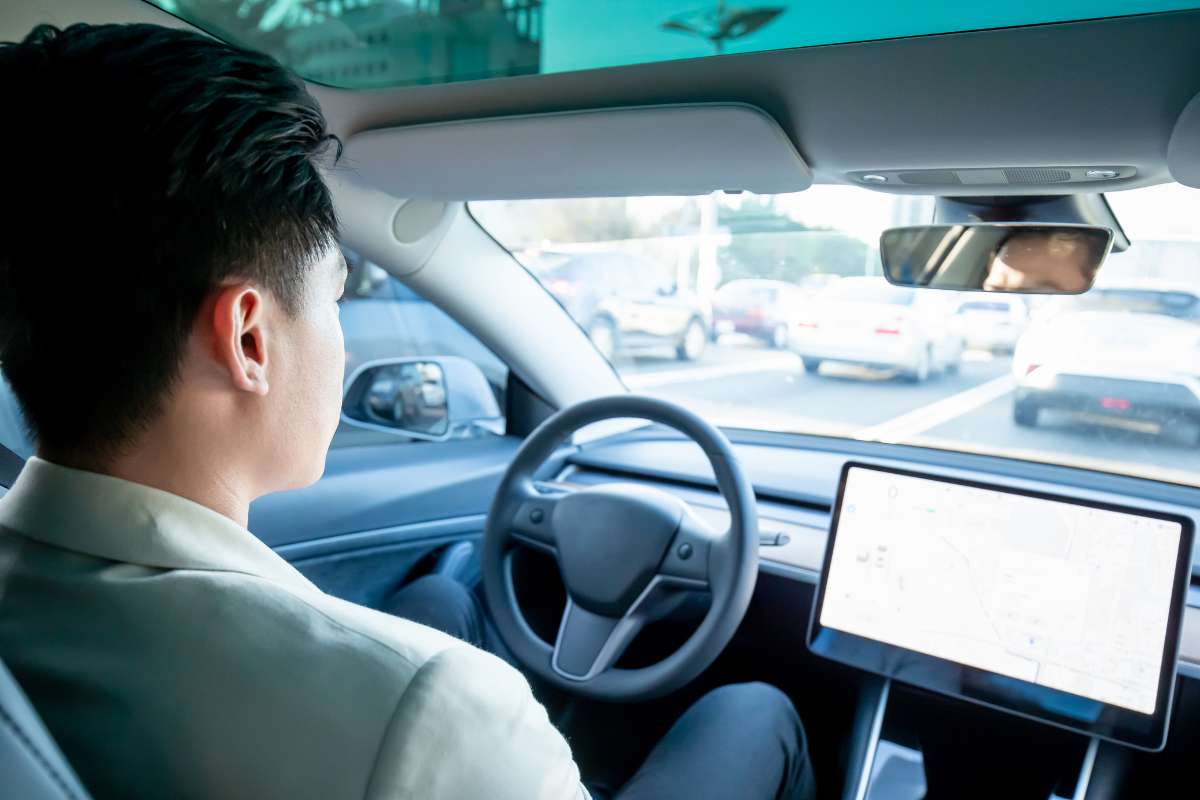Introduction
There is a possibility that one day, the humanoids will look back at us the way we look at skeletons or fossils. There is an immense changeover in the outlook of the world with the evolution of technology. Evidently, the tech and evolution of artificial intelligence are affecting the lifestyle of human beings. The amalgamation of tech with the human interface has made the functioning of the world more efficient. The regular applications that people use, for example, GPS and self-driving cars, are the work of cyber-physical systems (CPS).
This article will discuss CPS systems, their integration with the physical structures, their role in improving the functioning of the world, and forthcoming challenges.
Get to know more about the Cyber-Physical Systems:
What are Cyber-Physical Systems?
CPS is revolutionizing the whole perspective that people have on the world. It is impacting the daily work and functions of human life. To elaborate, CPS is the integration of computational functions or cyber systems with physical structures that help solve problems or tasks in the real world. They comprise hardware, software, and other networking systems. They are closely related to the concept of robotics and humanoid interfaces. Cyber-physical systems (CPS) play a crucial role in various industries like aviation, healthcare, manufacturing, automobile, etc. It has helped the efficiency of these fields, contributing to the improved productivity.
Applications of CPS

With the motive to boost productivity, CTS has a range of applications across various industries. This includes the installation of power grids, the use of robotics, and the development of systems for autopilot aviation. Some of the applications are mentioned below.
- Manufacturing: Factories or industries made a smart move by installing cyber-physical systems to improve the efficiency of manufacturing products. These can be used to automate the whole manufacturing process. The installation of robots with machine learning algorithms helps in analyzing the data and information of the products. It helps in looking after the complete production process, assessing possible maintenance requirements, and preventing failure.
- Healthcare: With the increase in the medical risks and cost of diagnosis, health specialists are relying on CPS to offer smooth, high-functioning, and efficient medical services. Applications like patient monitoring systems, sensor implants, and robotic surgeries are being installed to ensure a high-efficiency diagnosis. Installing real-time remote physical monitoring devices, like insulin pumps, has helped the diagnosis of the elderly and offers more personalized treatments for other patients.
- Transportation: People are familiar with the name TESLA. What is that one talked feature that has increased its popularity? Well, the answer is its ability to self-drive and navigate. The transport sector is booming with the implementation of cyber-physical systems. These vehicles use advanced sensors and algorithms that help them to assess the surroundings, make decisions according to that, and navigate accurately. It also plays an important role in the aviation sector, as the algorithms help in designing future aircraft, air traffic management, and autopilot systems.
- Energy: Energy is one of the essential resources known to mankind. It has always been a crucial topic of public interest. Smart power grids are the best example of CPS. Sensors and other devices monitor and control the power grids to regulate the flow of electricity and improve efficiency. Smart power grids play a crucial role in reducing energy consumption and maintaining safety measures.
Cyber-physical systems are often compared to the Internet of Things(IoT). Before discussing the key differences, people must understand about IoT.
What is the Internet of Things(IoT)?
The Internet of Things or IoT refers to the collective network of devices that are connected to the Internet using software, sensors, and other technologies. They mainly focus on the communication between the devices and the cloud. IoT devices are also known as smart objects.
These can range from devices like thermostats, refrigerators, and home security systems to industrial inventory and transportation networks.
CPS vs IoT: Key Differences


Examples of Cyber-Physical Systems
- Operational Technology (OT): It includes a combination of hardware and software systems to control the physical devices of the manufacturing industries. OT is important in managing transportation systems and power plants.
- Industrial Internet of Things (IIoT): Uses interconnected networks, sensors, and other devices in industrial applications. It also involves real-time data analysis and data collection to improve the efficiency and productivity of the industries.
- Smart Manufacturing: Cyber-physical systems use advanced robots in smart factories to help with manufacturing. They are efficient in analyzing the maintenance requirements and preventing failures.
- Autonomous Vehicles: These vehicles use sensors and artificial intelligence to navigate and self-drive.
- Aerospace: Drones, defense missile systems, and auto-pilot functions are examples of cyber-physical systems.
Possible Challenges

CPS is the integration of the cyber world and the physical. They are interconnected networking systems, and due to their nature, they are vulnerable to cyber-attacks. Given their complexity and use of computational components, there is a possibility that hackers can find vulnerabilities in the communication or networking systems. They are vulnerable to cyber threats as hackers can try to gain access to cyber-physical systems through the internet.
Conclusion
Technology is the driving factor in the present generation. The world is highly dependent on it. It certainly makes the work efficient. Cyber-physical systems play an important role in improving the efficiency of various industries. They are the integration of computer devices with physical devices and can find solutions to real-life problems. Their implementation across fields like manufacturing, transportation, and aviation has helped them increase productivity and work more efficiently. However, with their increased use, they are vulnerable to cyber-attacks. So, industries must take accurate precautions to prevent cyber-attacks and maintain productivity.






